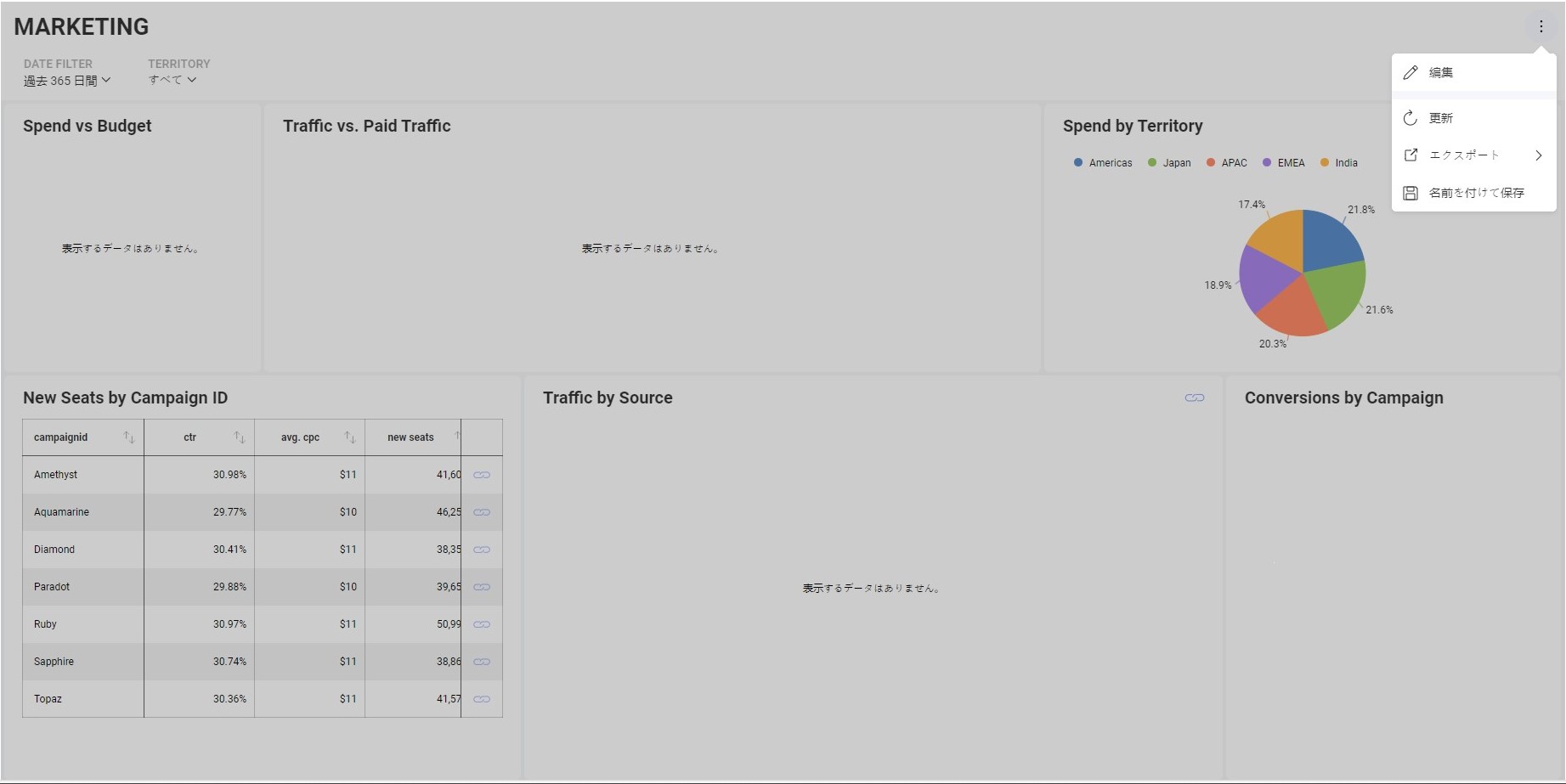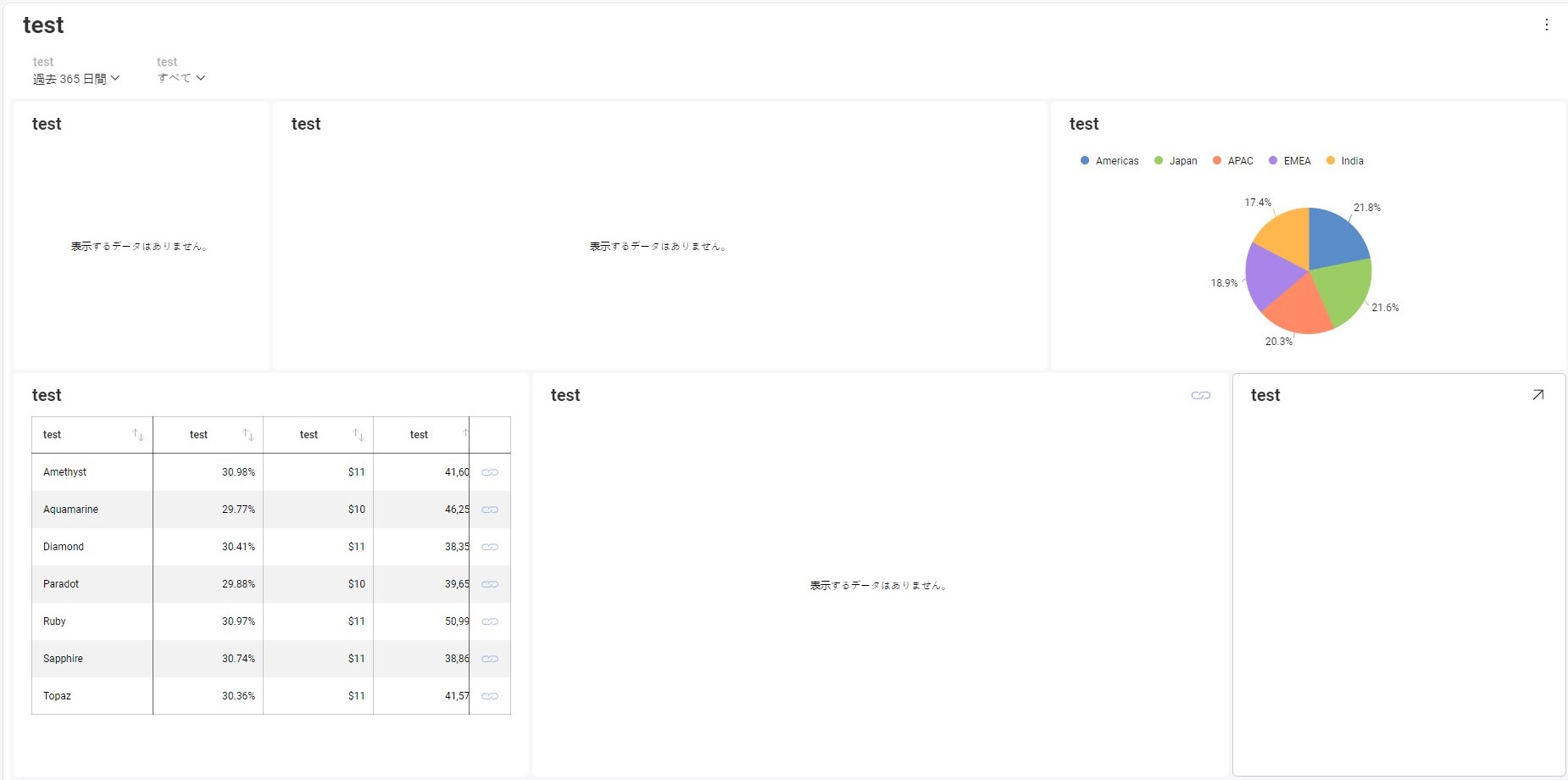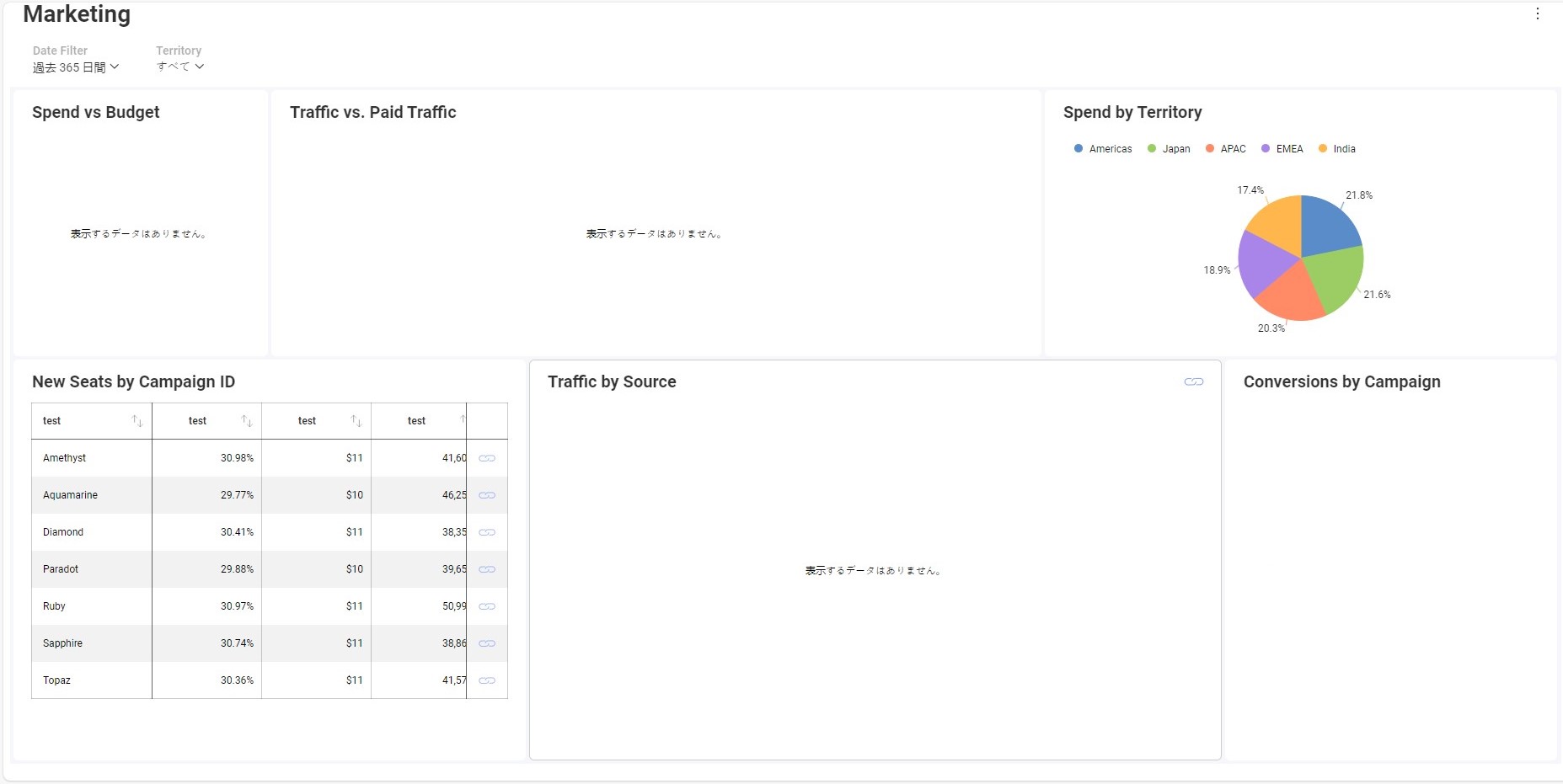Localizing
The Reveal SDK offers robust support for localization, enhancing its versatility and appeal across diverse global markets. Featuring a user-friendly and comprehensive localization framework, developers can seamlessly adapt the application to various languages.
The current localization locale is automatically determined by the user's browser by default. However, to enable string localization, it is necessary to set the locale for the SDK itself. This step allows for the customization of the display language for internal strings. The SDK supports the following locales: de, es, fr, it, ja, ko, ms, nl, pt, ru, zh-cn, and zh-tw. You can reference this list by examining the $.ig.SupportedLocales property.
To set the locale, use the method $.ig.RevealSdkSettings.overrideLocale and pass the desired locale from the aforementioned list as a parameter. It is crucial to await the promise before attempting to override the locale again. Ensure that you follow this sequence to avoid potential issues.
$.ig.RevealSdkSettings.overrideLocale('ja').then(_ => {
...
})
It should change all internal text to japanese.

After that, we are ready to start localizing our strings, such as visualization titles and column names.
To provide your custom translations, you need to add a handler for the $.ig.RevealSdkSettings.localizedStringsProvider event on the client. This event receives an RVLocalizationElement and an RVLocalizationContext and should return a localized string.
$.ig.RevealSdkSettings.localizedStringsProvider = function (element, context) {
...
return localizedString;
};
We will add an event handler to consistently return the localized string test for any input string.
$.ig.RevealSdkSettings.localizedStringsProvider = function (element, context) {
return "test";
};
After being added, the dashboard should appear as follows.

Let's delve a bit deeper. Instead of returning test for everything, let's return test only for visualization field labels.
$.ig.RevealSdkSettings.localizedStringsProvider = function (element, context) {
if (element.elementType === $.ig.RVLocalizationElementType.VisualizationFieldLabel) {
return "test";
}
return element.title ?? element.name;
};

You can use this way to customize the localization behavior for the following element types: DashboardFilterTitle, DashboardTitle, FieldLabel, VisualizationFieldLabel and VisualizationTitle.
Example: Selecting the locale from a combo box
Step 1 - Add a combo box to the page with the available localization options
<div class="dropdown">
<button class="dropbtn">Language
<i class="fa fa-caret-down"></i>
</button>
<div class="dropdown-content">
<a href="#" onclick="changeLang('en')">English</a>
<a href="#" onclick="changeLang('ja')">Japanese</a>
<a href="#" onclick="changeLang('es')">Spanish</a>
<a href="#" onclick="changeLang('it')">Italian</a>
<a href="#" onclick="changeLang('fr')">French</a>
</div>
</div>
Step 2 - Add the changeLang method
//function to set the language from the combobox and save it on sessionStorage
function changeLang(lang) {
sessionStorage.setItem('lang', lang);
location.reload();
}
Step 3 - Create a dictionary with the required words
//this map helps us get the index by lang
const lang = {
"en": 0, "ja": 1, "es": 2, "it": 3, "fr": 4
};
//this is a map with the word we want to translate and a list of words in each language
const dictionaryTable = {
"Date Filter": ["Date Filter", "日付フィルター", "Filtro de Fecha", "Filtro data", "Filtre de date"],
"Date": ["Date", "日にち", "Fecha", "Data", "Date"],
"Marketing": ["Marketing", "マーケティング", "Marketing", "Marketing", "Commercialisation"],
"Spend": ["Spend", "費やす", "Gastado", "Spendere", "Dépenser"],
"Budget": ["Budget", "バジェット", "Presupuesto", "Bilancio", "Budget"],
"CTR": ["CTR", "クリック率", "CTR", "CTR", "CTR"],
"Spend by Territory": ["Spend by Territory", "テリトリー別支出額", "Gastos por territorios", "Spese per territorio", "Dépenses par territoire"],
"Spend vs Budget": ["Spend vs Budget", "支出対予算", "Gasto vs Presupuesto", "Spesa vs budget", "Dépenses vs budget"],
"Organic Traffic": ["Organic Traffic", "オーガニックトラフィック", "Tráfico orgánico", "Traffico organico", "Trafic organique"],
};
Step 4 - Create a function to translate from our dictionary
//function to translate, expects an RVLocalizationElement and returns a localized string
function translate(element) {
const selectedLang = sessionLang.toLowerCase();
const elementDesc = element.title ? element.title : element.name;
const candidateList = dictionaryTable[elementDesc];
const candidate = candidateList ? candidateList[lang[selectedLang]] : undefined;
return candidate ? candidate : elementDesc;
}
Step 5 - Add a handler for the $.ig.RevealSdkSettings.localizedStringsProvider event.
$.ig.RevealSdkSettings.overrideLocale(sessionLang).then(_ => {
$.ig.RevealSdkSettings.localizedStringsProvider = function (element, context) {
return translate(element);
};
})
Step 6 - Add the remaining the code to load our dashboard
const sessionLang = sessionStorage.getItem('lang') ?? 'en';
const lang = {
"en": 0, "ja": 1, "es": 2, "it": 3, "fr": 4
};
const dictionaryTable = {
//"OriginalWord": ["English", "Japanese", "Spanish", "Italian", "French"], => example guide
"Date Filter": ["Date Filter", "日付フィルター", "Filtro de Fecha", "Filtro data", "Filtre de date"],
"Date": ["Date", "日にち", "Fecha", "Data", "Date"],
"Marketing": ["Marketing", "マーケティング", "Marketing", "Marketing", "Commercialisation"],
"Spend": ["Spend", "費やす", "Gastado", "Spendere", "Dépenser"],
"Budget": ["Budget", "バジェット", "Presupuesto", "Bilancio", "Budget"],
"CTR": ["CTR", "クリック率", "CTR", "CTR", "CTR"],
"Spend by Territory": ["Spend by Territory", "テリトリー別支出額", "Gastos por territorios", "Spese per territorio", "Dépenses par territoire"],
"Spend vs Budget": ["Spend vs Budget", "支出対予算", "Gasto vs Presupuesto", "Spesa vs budget", "Dépenses vs budget"],
"Organic Traffic": ["Organic Traffic", "オーガニックトラフィック", "Tráfico orgánico", "Traffico organico", "Trafic organique"],
};
//function to translate, expects an RVLocalizationElement and returns a localized string
function translate(element) {
const elementDesc = element.title ? element.title : element.name;
const candidateList = dictionaryTable[elementDesc];
const candidate = candidateList ? candidateList[lang[sessionLang]] : undefined;
return candidate ? candidate : elementDesc;
}
//function to set the language from the combo box and save it into sessionStorage
function changeLang(lang) {
sessionStorage.setItem('lang', lang)
location.reload();
}
// set this to your server url
$.ig.RevealSdkSettings.setBaseUrl("https://samples.revealbi.io/upmedia-backend/reveal-api/");
$.ig.RevealSdkSettings.overrideLocale(sessionLang).then(_ => {
$.ig.RevealSdkSettings.localizedStringsProvider = function (element, context) {
return translate(element);
};
})
$.ig.RVDashboard.loadDashboard("Marketing").then(dashboard => {
const revealView = new $.ig.RevealView("#revealView");
revealView.dashboard = dashboard;
})
The source code to this sample can be found on GitHub